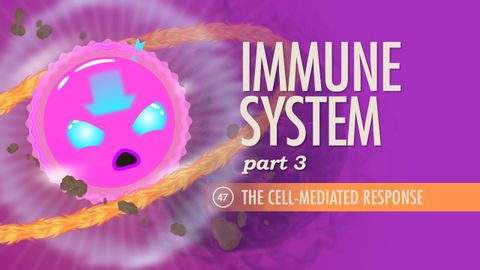免疫系統,第三部分:速成班 A&P #47 (Immune System, part 3: Crash Course A&P #47)
Jack 發佈於 2021 年 01 月 14 日  沒有此條件下的單字
沒有此條件下的單字US /ˈprɛznt/
・
UK /'preznt/
- adj.出席;在場的;目前的
- n.正在進行的;現在時態;目前的;禮物
- v.t.介紹;主持;介紹;展現;贈送
- v.i.出現
US /ɪˈmjoon/
・
UK /ɪˈmju:n/
US /rɪˈspɑns/
・
UK /riˈspɔns/
- n.回答;回應;反應;答(或唱和)短詩;(醫療)反應;(電腦)回應
US /rɪ'li:s/
・
UK /rɪ'li:s/
- v.t.釋放;解放;(電影音樂等)上市;釋放;放手;發布
- n.釋放;解放(的動作);發行(新產品、電影、書籍);解放(從悲傷或困境中);豁免;釋放;釋放裝置;棄權書;新聞稿;版本

